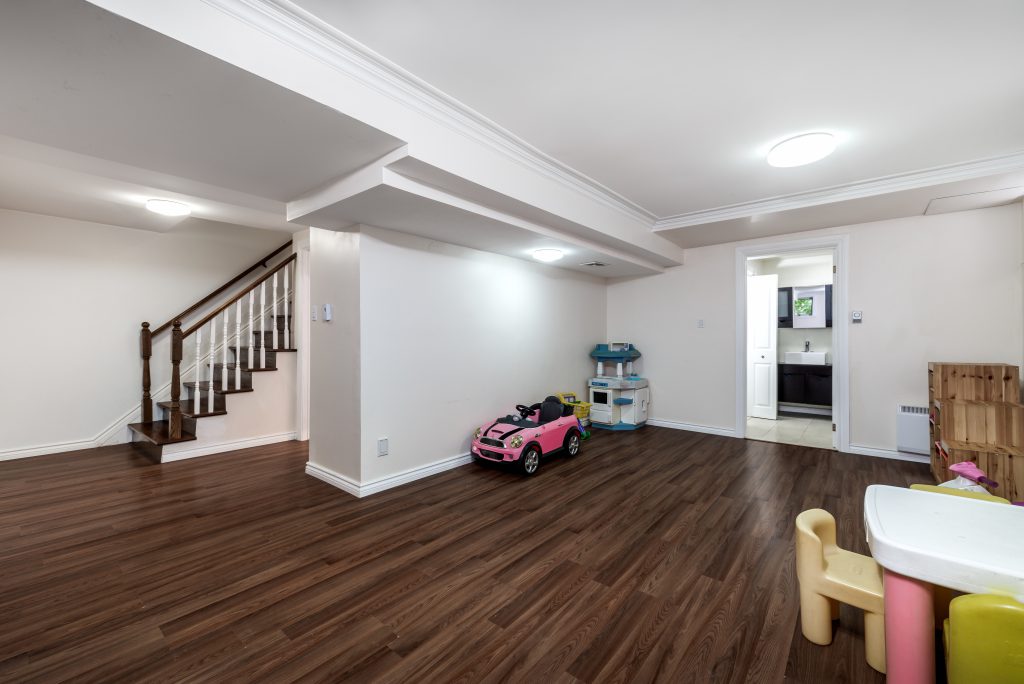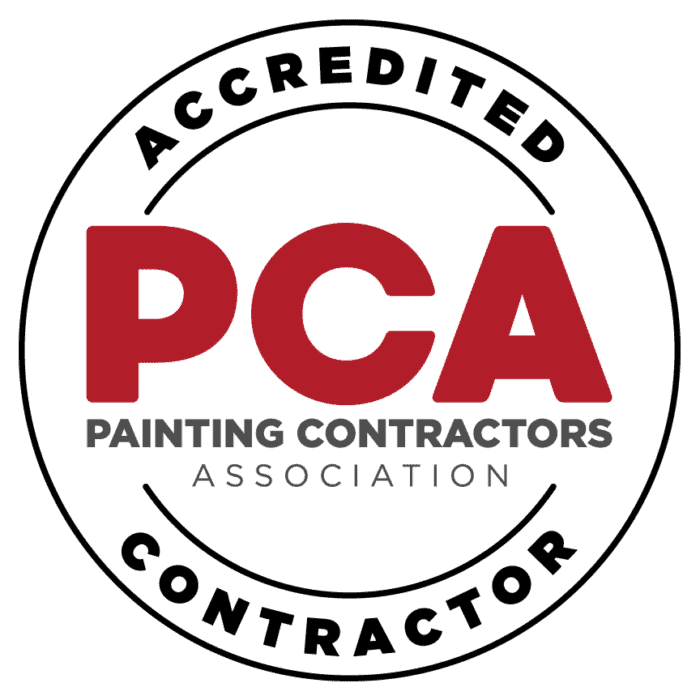Ceiling water stains can show up seemingly out of nowhere, instantly grabbing your attention with their unpleasant appearance. Whether you’re dealing with a faint yellowish ring or a dark streak, these stains often signals underlying problems like leaks, humidity issues, or even mold growth.
If you’ve been wondering how to remove ceiling water stains, you’re in the right place. In this guide, we’ll walk you through everything from finding the cause of the stain to cleaning, repairing, and preventing future damage. Plus, if you’re in Erie, CO, we’ll explain how professional interior painters can take the stress out of restoring your ceiling.
Key Takeaways:
- Always address the source of water damage before cleaning ceiling stains.
- Use effective methods like vinegar, bleach, or commercial products for stain removal.
- Repainting the ceiling with a primer and fresh coat of paint ensures a flawless finish.
- Prevent future stains with proper maintenance, ventilation, and regular inspections.
Why Do Ceiling Water Stains Happen?
Water stains don’t just appear out of thin air. They’re a symptom of a larger problem. Understanding the cause is the first step in dealing with them effectively. Here are the main reasons ceiling water stains develop:
1. Plumbing Leaks
One of the most common reasons for ceiling water stains is a plumbing leak. These leaks usually happen in places like bathrooms or kitchens, where water pipes are running. If you notice a stain directly under a bathroom, it’s likely caused by a leaking pipe, a dripping faucet, or even a toilet that’s not sealed properly. These leaks often leave straight-line water stains or spots on your ceiling. Over time, the stains can grow darker or spread if the leak isn’t fixed.
2. Roof Problems
Your roof is your home’s first line of defense against rain and snow, but if it’s damaged, water can sneak in. Missing shingles, holes, or cracks in the roof can let water drip into your home. This often causes stains on the ceiling in your attic or the rooms just below the roof. Things like clogged gutters or poorly installed flashing (the material that seals roof edges) can make the problem worse by directing water where it doesn’t belong.
3. Humidity and Condensation
Bathrooms, kitchens, and attics are often humid areas. When there’s too much moisture in the air and not enough ventilation, you’ll start to see problems. That extra humidity can turn into condensation—tiny water droplets that collect on surfaces like your ceiling. Over time, this moisture can lead to mildew, water stains, or even mold if it’s not addressed. Without proper airflow or fans, these areas can quickly become a breeding ground for stains and damage.
4. Gutter Issues
Your gutters are there to keep water flowing away from your house, but if they’re clogged or damaged, the water has nowhere to go. Instead, it can overflow and seep into your home. This water can eventually make its way into your walls or ceilings, causing stains and other damage. Keeping your gutters clean and making sure they’re working properly is an easy way to avoid this kind of problem.
By identifying the root cause of your ceiling water stains, you can stop the problem at its source and prevent it from recurring.
Fix the Source of Water Damage
Before tackling the stain itself, it’s essential to address what’s causing it. Cleaning a stain without fixing the root problem is like putting a bandage on a wound without treating the infection—it won’t last. Here’s how to handle common sources of water damage:
✅Roof Repairs. If your stain is from a roof leak, hire a professional to inspect for damaged shingles, cracks, or holes. Quick action can prevent further damage and additional staining.
✅Plumbing Fixes. A plumber can locate leaks in pipes, fittings, or fixtures. Prompt repairs will minimize water damage and protect the structural integrity of your home.
✅Ventilation Improvements. Bathrooms, kitchens, and attics are prone to moisture buildup. Adding or repairing exhaust fans and using dehumidifiers can significantly reduce condensation.
✅Gutter Maintenance. Clear out debris from your gutters regularly to ensure proper drainage. Functional gutters direct water away from your home, preventing water intrusion and ceiling stains.
How to Remove Ceiling Water Stains?
Once you’ve addressed the source, it’s time to tackle the stains themselves. Different methods work best for different types of stains and ceiling materials. Here’s how to remove ceiling water stains effectively:
Vinegar Solution for Light Stains
For small or light stains, a mixture of white vinegar and water works wonders:
- Mix equal parts vinegar and water in a spray bottle.
- Spray the mixture onto the stain and let it sit for 10–15 minutes.
- Gently blot the area with a soft sponge, working from the edges inward.
- Repeat as necessary until the stain disappears.
Bleach for Stubborn or Moldy Stains
If your stain is darker or mold is present, bleach is a stronger option:
- Mix 1 part bleach with 3 parts water.
- Spray the mixture lightly onto the stained area, avoiding over-saturation.
- Allow it to sit for 10 minutes, then gently dab with a damp sponge.
- Rinse with clean water and let the area dry completely.
Safety Tip: Always work in a well-ventilated space when using bleach and wear gloves to protect your skin.
Commercial Ceiling Stain Removers
Specialized ceiling stain sprays or tile water stain removers are ideal for textured ceilings, such as popcorn ceilings. These products are formulated to remove tough stains without damaging the texture.
Prime and Paint Your Ceiling
After cleaning, some stains might leave behind faint discoloration. To restore your ceiling to its former glory, follow these steps:
- Use a stain-blocking primer. A high-quality primer seals the stain and prevents it from bleeding through.
- Repaint the ceiling. Match your current paint color or repaint the entire ceiling for an even look.
- Handle textured ceilings carefully. Use a paint sprayer for popcorn or textured ceilings to avoid disturbing the surface.
Prevent Future Ceiling Stains
Prevention is key to keeping your ceiling stain-free. Here’s how to avoid future problems:
✅Improve Ventilation. Install exhaust fans in bathrooms and kitchens, and use dehumidifiers in damp areas.
✅Inspect Plumbing Regularly. Catch leaks early by checking pipes and fixtures for drips or moisture.
✅Maintain Gutters and Drainage. Clean gutters seasonally to ensure proper water flow.
✅Address Condensation. Keep attic spaces well-ventilated and reduce indoor humidity to prevent condensation.
When to Call Professional Interior Painters in Erie, CO
Sometimes, the damage is too extensive or the stains are too persistent for DIY methods. That’s when hiring professional interior painters in Erie CO is your best option. At A New View Painting, we provide:
- Expert assessment to ensure underlying problems are fully addressed.
- Stain-blocking primers and high-quality paints for a long-lasting finish.
- Professional techniques for textured ceilings like popcorn.
- Time-saving services to restore your ceiling without the hassle.
We proudly serve Erie, Broomfield, Lafayette, and the surrounding areas, offering expert interior painting solutions for water-stained ceilings.
Time to Refresh Your Ceiling?
Removing ceiling water stains doesn’t have to be overwhelming. You can restore your home’s beauty with the right approach—fixing the source, cleaning the stains, and painting for a flawless finish.
If you’d prefer to leave the hard work to the experts, A New View Painting is here to help.
Call us at 970-660-3993 today for a FREE estimate. Let’s make your ceiling look as good as new!






